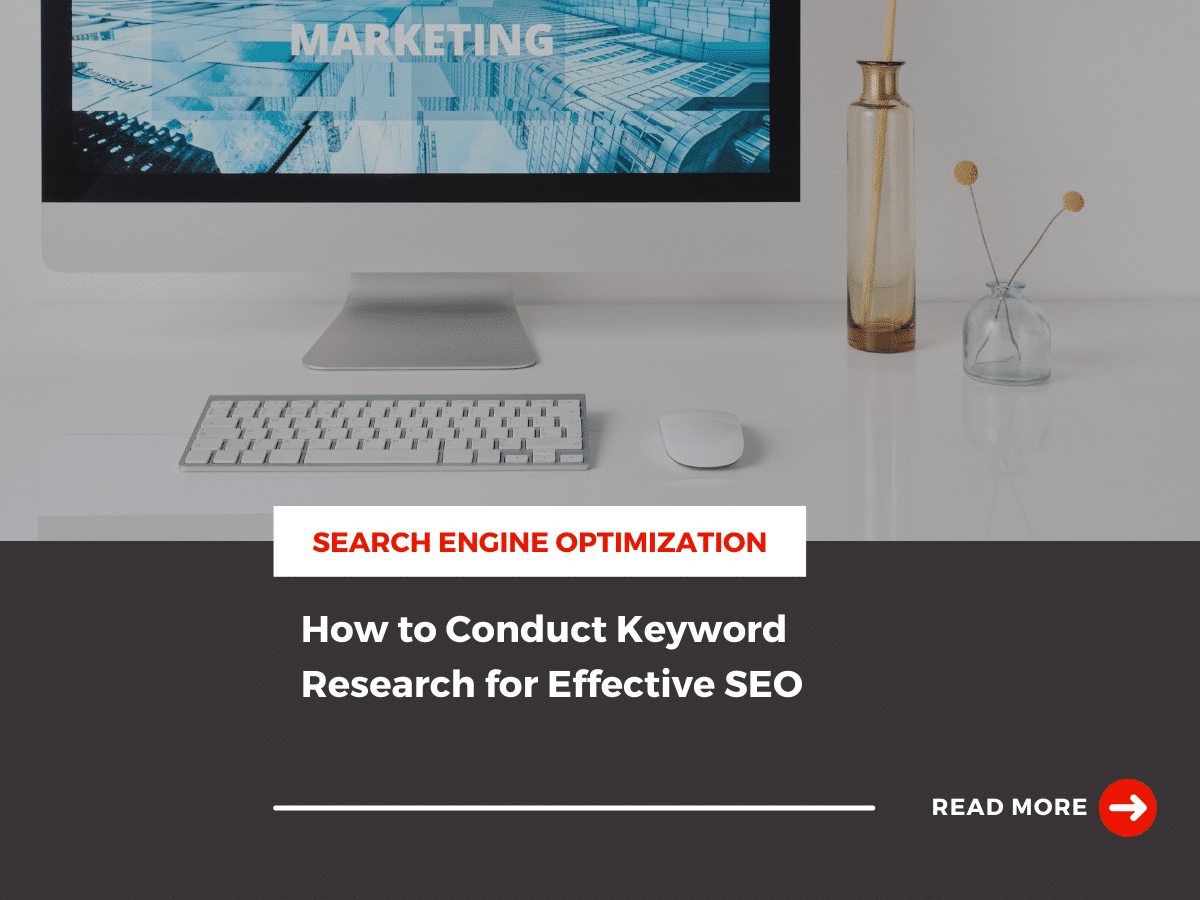Think about everything you search on Google or Bing in a given day. The small, quick phrases that you use to find resources, stores, and services in your community.
When you click on an option on the search engine results page, you expect to find exactly what you need to answer your search query.
These words are keywords – and they are essential to the success of your search engine optimization strategy. If you aren’t incorporating the keywords that your audience would be using to find products and services you offer, you’ll never grow your online presence.
When building a successful strategy that delivers results, you’ll want to take time to conduct keyword research for SEO.
We’re here to walk you through the ins and outs of SEO keyword analysis, so you can start finetuning your approach to SEO and improve your organic search rankings.
Let’s dive in.
What are the Four Types of Keywords?
Before we get started, we need to start with the basics. There are four types of keywords you’ll want to be familiar with.
Here’s a breakdown:
- Short-Tail Keywords: Terms that include 1-3 words.
- Long-Tail Keywords: Terms that contain more than 3 words
- Questions: Specific, informational queries framed as questions
- Intent Targeting: Keywords that align with one-of-the-hour stages of the buyer’s journey. (informational, transactional, commercial, and navigational)
When developing your SEO keyword strategy, include a mix of all four keyword types. This is the best way to maximize your potential.
What are the Target Keywords for SEO?
A target keyword will be the “target” of your landing page or blog. This is typically a short-tail keyword that would best be used to describe the content on the page. When writing content, you’ll want to ensure you’re using the keyword at least 3-5 times throughout the blog, landing page, or product page.
What are the Three Main Elements of Keyword Research?
Before diving into your keyword research for SEO, you’ll want to understand the three main elements of effective keyword research.
When you’re researching keywords, look at the following:
- Search volume: This refers to how popular the keyword is. If a keyword has a high search volume, there is more potential to bring traffic to your website.
- Competition: Once you find a keyword with a high search volume, you’ll need to check its potential by looking at which competitors currently rank for these words. If the competitors are big names or established domains, it’s harder for your content to rank on the SERPS.
- Relevance: Lastly, the keywords should be relevant to the content. Google prioritizes content that is valuable, useful, and written for humans. If you’re using keywords that aren’t aligned with the content, you’ll have a hard time getting your content to rank.
Why is Keyword Research Important?
Keyword research is crucial for the success of your SEO strategy as it lays the foundation for visibility and targeting the right audience. By identifying relevant and popular keywords, you can optimize your content to rank higher in search engine results pages, increasing your chances of being noticed by your target audience. Moreover, keyword research helps you understand your audience’s language and intent, enabling you to create valuable content that addresses their needs. It also allows you to analyze competitor strategies, find untapped niches, and plan your content creation efforts effectively.
How to Do Keyword Research
When learning how to do keyword research, there are five steps you need to take. Each action will guide you toward the best keywords and provide a baseline understanding of the opportunities you have for your SEO strategy.
Here’s how to get started.
Start With User Intent
When looking for keywords to use in your SEO strategy, your target audience is an invaluable resource. What problem are they trying to solve with their search query? What words would they use when searching for a product or service like yours? The user intent will be your guide through the research process, providing you with insight and direction into how your audience thinks.
To understand your user intent, here’s what you need to do:
- Google a short-tail or long-tail keyword
- Study the websites and landing pages that come up on the SERPs
- Take a closer look at the titles and snippets
Let’s say you start by searching for Hotels in Cabo. You’ll see that people also want to know the best parts of Cabo to start in, all-inclusive options, and flight and hotel deals. This would be considered informational intent.
Keywords are often put into four different search intent buckets:
- Commercial intent: Customers looking to make a purchase.
- Informational intent: Searchers looking to learn more about a topic, product, or service.
- Transactional intent: Customers interested in purchasing but want to learn more before buying.
- Navigational intent: Keywords used that are tied to a specific brand name.
Every keyword they use is linked to the total experience, not just one thought they are having. Whether they’re looking for puppies on sale in their city or planning a summer vacation – the user intent is to always be more than just a keyword or two. Once you get the total “picture” of their search query, you can plan your content more strategically.
Invest in Tools and Resources
There are many marketing tools marketers use to help with keyword research for SEO. Many of these tools are free or have a free version.
Here’s a breakdown of a few of the most popular.
- SEMrush: This tool offers a suite of SEO and content marketing tools. The keyword research tool will help you understand intent, search volume, keyword difficulty, and more.
- Ahrefs: Ahref’s free keyword planner tool features a dashboard of keyword data metrics you can use to understand keyword potential. Their tool goes beyond Google, showing you keywords across over 10 search engines.
- Moz: Moz offers a suite of free SEO tools for digital marketing. This is a great beginner-friendly tool with a user-friendly interface. With this tool, you can analyze keywords, perform a competitive analysis, and create keyword lists you can use for content planning.
- Google Keyword Planner: This tool helps you find new keywords and plan campaigns. Google Keyword Planner works great in conjunction with Google Ads. If you plan on spending money on advertising, you’ll want to use this tool to forecast conversions and CPC.
Long-Tail Vs. Short-Tail Keywords
As mentioned above, your SEO keyword strategy should include long-tail and short-tail keywords. A blend of both will help you connect with more customers throughout the buyer’s journey.
While short-tail keywords are some of the most popular to include, they are competitive. It’s unlikely that you’ll rank for the word “black jeans.” However, you may have more luck ranking for a long-tail keyword like “best black jeans for fall.”
Long-tail keywords are specific and highly relevant to the content you’re creating. They also have less competition and can complement your strategy.
Competitor Analysis
What your competitors are doing provides invaluable insight into what you could be doing. When starting your SEO keyword research analysis, you’ll want to look at their content to see if there are any gaps in the keywords that you can capitalize. Are there keywords they aren’t using? Are they more focused on short-tail vs. long-tail? Maybe, they haven’t been writing about a topic enough.
Here are some key points to consider when conducting your competitor analysis:
- Where does your brand stand compared to your competitors?
- What topics are they covering?
- What keywords are they using? Are there any keywords they aren’t using enough of?
- What are they ranking for?
Keyword Optimization
Once you have the keyword strategy figured out, the work doesn’t stop there. Marketers should always be optimizing content and conducting keyword research for SEO. You should look for new opportunities and optimize your titles, meta descriptions, and the keywords you use in the body of the copy.
While doing this may be tedious, it will help you continue to work your way up the SERPs and give you that competitive advantage.
You’ll also want to avoid keyword stuffing and ensure your keywords flow naturally throughout the content. Here are some tips for doing so:
- If the word doesn’t sound right, don’t include it
- If you’re overusing your target keyword, increase your word count
- Avoid incorrect phrasing or poor grammar
Take Your SEO Keyword Research Analysis to the Next Level
Conducting a thorough SEO keyword research analysis is vital to your overall strategy. If you aren’t using the right keywords or are too focused on short-tail instead of long-tail, you’ll never see the results you need to get your content in front of your customers.
At Kanbar Digital, we’re passionate about helping businesses of every size build a results-driven SEO keyword strategy. We’ll help you identify opportunities and look at the challenges you currently face with the content you’re using.




